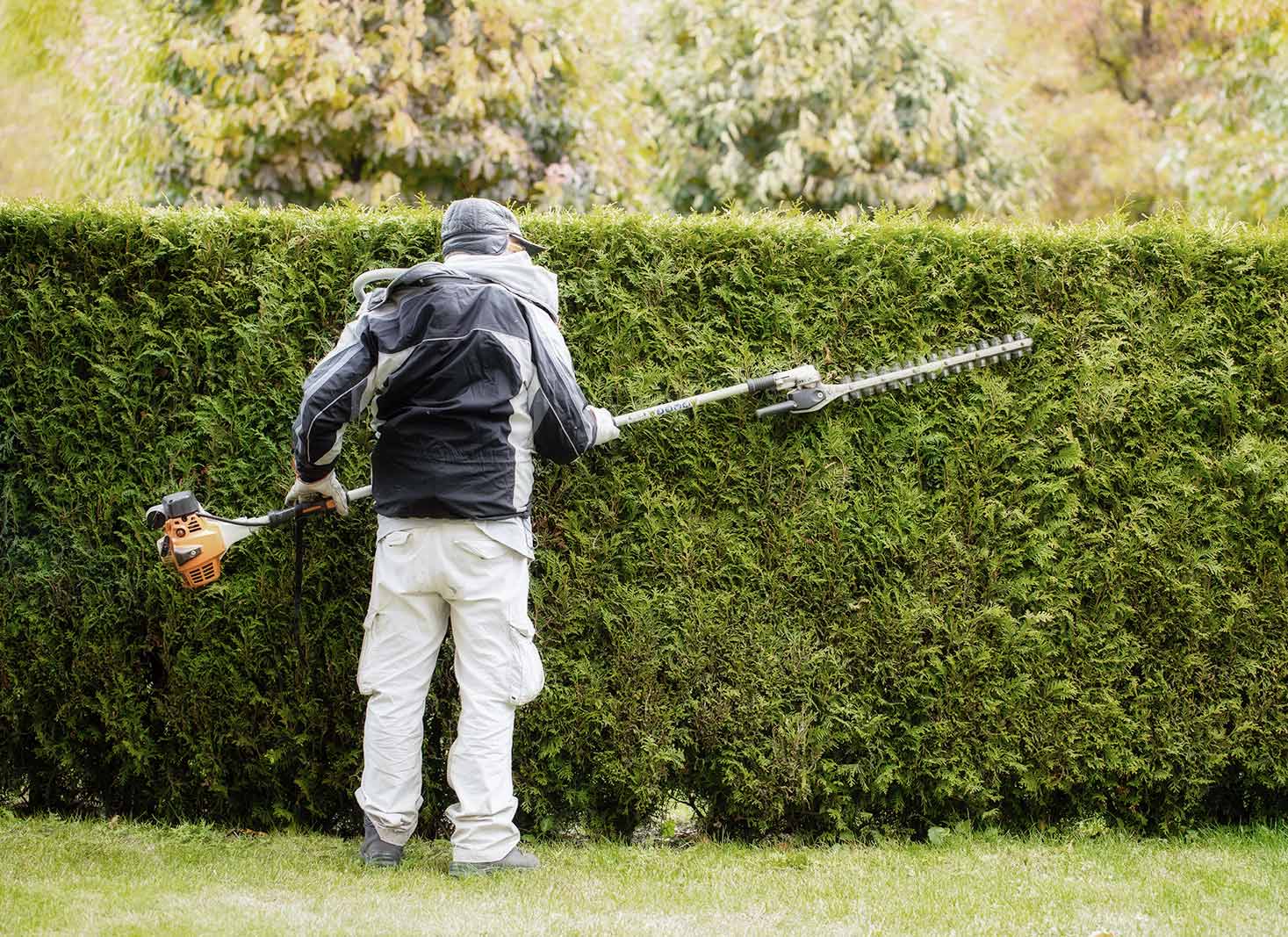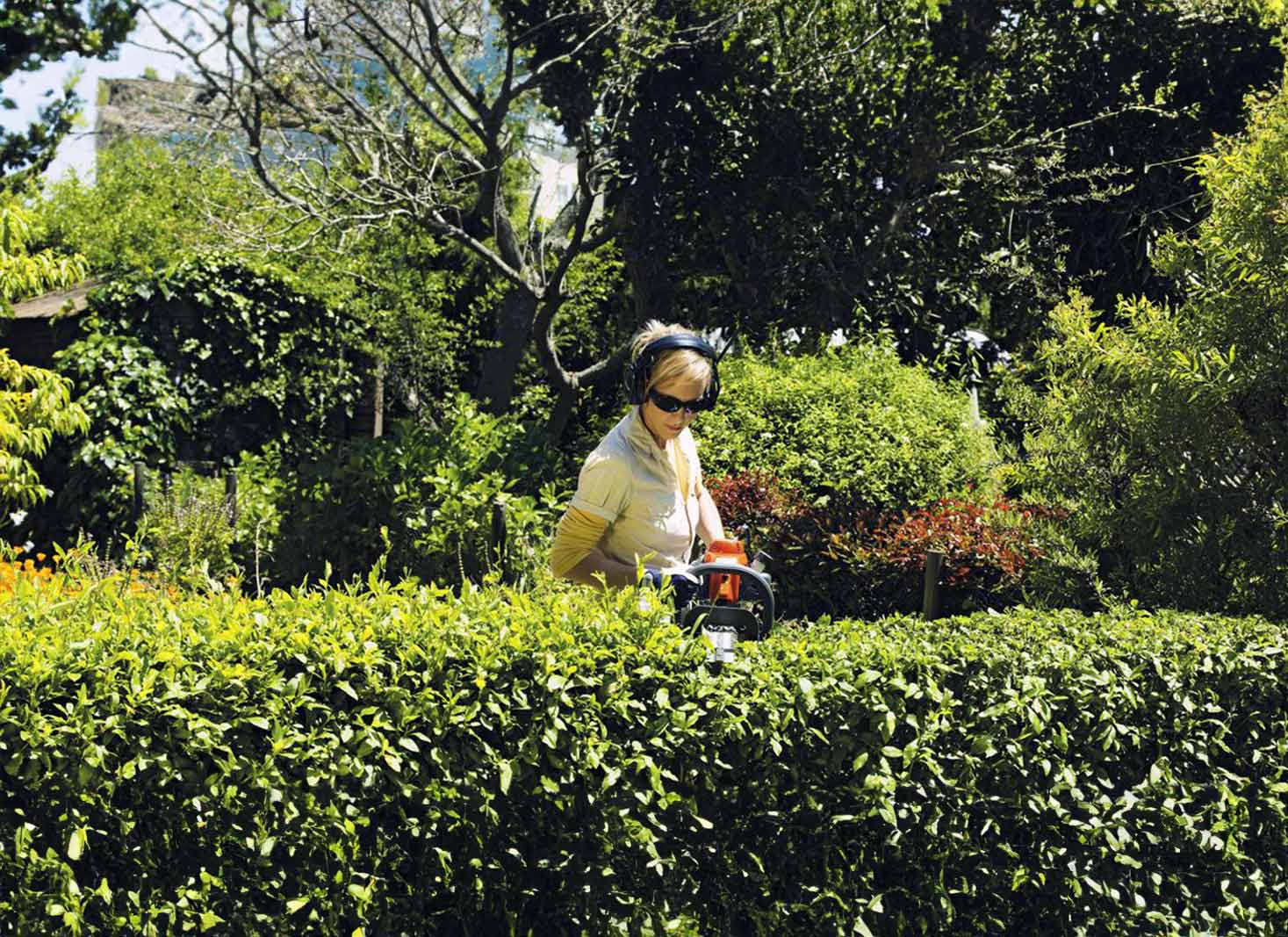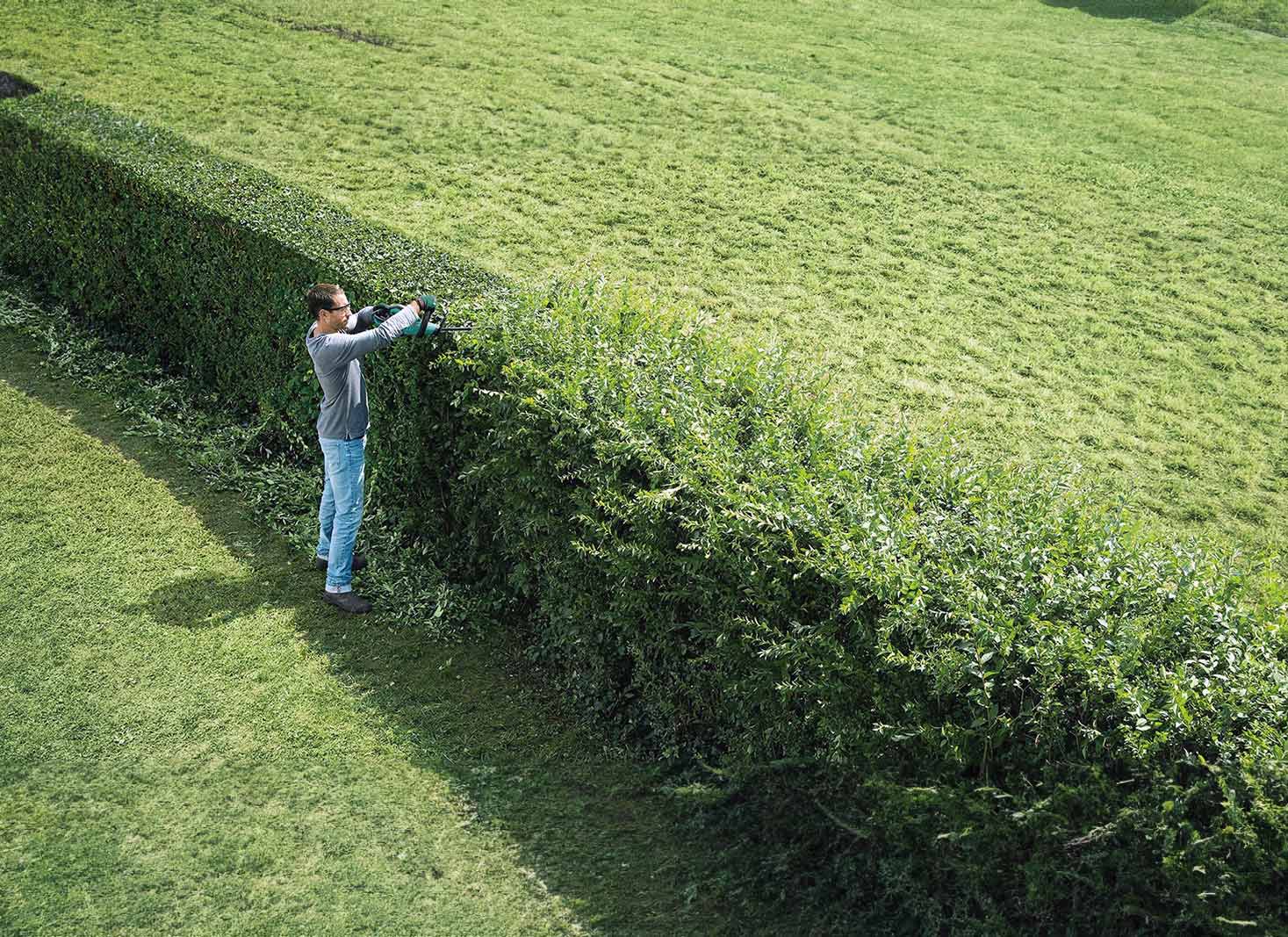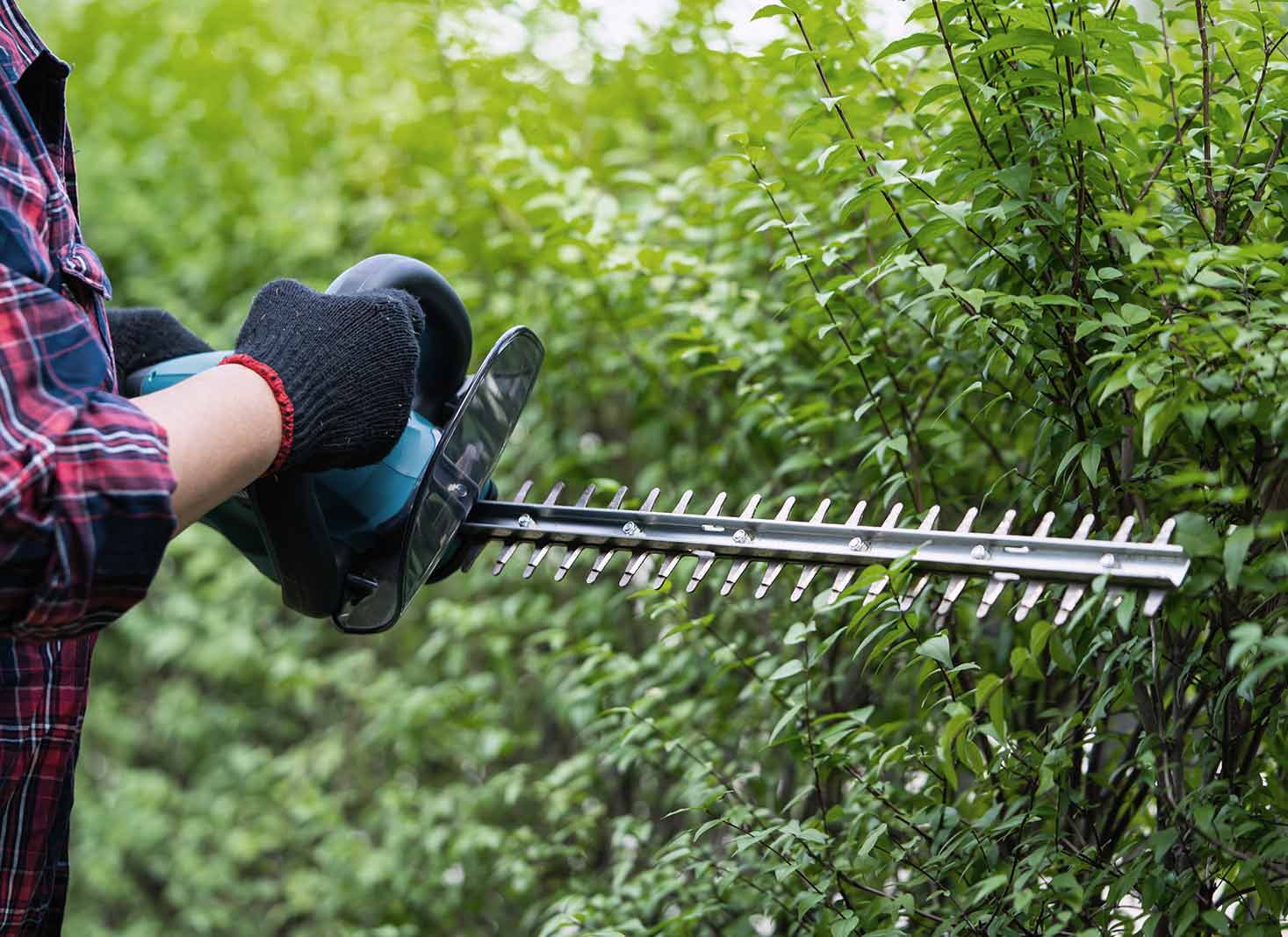Pruning your hedge goes beyond merely enhancing its appearance. It’s essential for preventing the detrimental effects of unchecked growth on the hedge. Regular maintenance cuts are crucial for the health of both formal and informal hedges.
Generally, the best time to trim a hedge is in the late spring, early fall, or late winter, when the hedges are dormant. However, the ideal time to trim will depend on the type of hedge plant you have. How it should be trimmed will depend on it too, plus the style of your garden.
In this article, we will discuss more about the ideal time to trim hedges and why pruning is important for their growth. Read on to learn more.

What we cover
ToggleWhen is the best time to trim a hedge?
Trimming hedges at the right time of year is imperative for the plant’s overall health. The right time of year will depend on the species of tree but according to Husqvarna, the optimal time is during the dormant period so late winter or early spring.
It is not advisable to trim hedges in summer or autumn as they won’t have sufficient time to recover before the cold sets in.
Why is it important to trim hedges?
If a hedge remains untrimmed, the amount of light and moisture it receives will be greatly reduced. With less light and moisture, you cannot expect much of the growth of your hedge.
Along with pruning, trimming the shrubs allows for more air, sunshine, and moisture – all of which are essential in keeping a hedge healthy and strong.
Here are just a few reasons to regularly trim your hedges.
- Improves growth and flower yield
- It improves the health of the plant
- It Increases sunlight delivery to newer shoots
- It creates an aesthetically pleasing finish
It is important to take note though that before trimming your hedge, make sure to consider any potential nesting birds.

Pruning vs trimming hedges
Most people interchange these terms, but there is a difference between pruning and trimming hedges. The difference is found in their purpose and how they are done.
Maintenance Pruning
To prune a hedge is to remove dead, infected, or weak branches from it. It focuses on the health and safety of the hedge. This does not mean though that pruning is much more important than trimming.
Formative Trimming
Trimming, on the other hand, is mostly done for aesthetic purposes. Trimming includes maintaining the size and the foliage of the shrubs. It also tidies up the hedge by cutting unnecessary leaf growths.
Both pruning and trimming keep your hedge healthy and nicely landscaped. They allow nutrients to be concentrated on the healthier parts of the plant and encourage the growth of new buds or tips.
How far back can you trim hedges?

When trimming hedges, you should never cut back more than ⅓ (one-third) of the total volume of the hedge at one time. Trimming more than a third of the hedge will most likely cause serious damage to its overall well-being.
Removing a third or less of the hedge is enough to promote new and healthy growth on the top half of the plant. It encourages the growth of new leaves and maintains the shape of the hedge.
Before trimming
Before trimming your hedge, make sure to spend time understanding the plant by observing its growth. With this, you will be able to determine which specific areas you are supposed to cut without causing harm to its underlying structure.
Most hedges have an inner skeleton which you should avoid. Unless you are hard pruning a plant, leave the hedge’s skeleton alone because it supports the smaller branches and leaves.
Cutting the hedge
When cutting, you should refrain from cutting too much since this can hinder the plant from getting energy from the sun, which results in hedge malnutrition. The worst-case scenario is you can actually kill the hedge if you cut back its structure.
Hedges should be trimmed to remove unwanted growth. Trimming your hedge in the spring will encourage the plant to grow new shoots and leaves in the summer. This will result in denser foliage and improved overall health for the shrubs.
Will hedges grow back if you cut them down?

As long as you are careful with how you cut or trim the hedge, it will grow back. However, if you have significantly damaged its structure during the trimming, it could be very difficult to help the hedge recover.
As long as the hedge’s skeleton has not been seriously harmed, it should respond well to occasional pruning and trimming and its overall recovery process.
Cutting too far
Cutting too far can cause the hedge to lose its ability to grow new leaves. Without new leaves, there will be fewer solar cells that will convert sunlight to energy (through photosynthesis) – energy that is immensely needed by the plant.
If the hedge is no longer able to receive energy from the sun because it has been too cut back, it will starve and eventually become malnourished. Plant malnutrition will destabilize its hormonal balance which could lead to the death of the plant.
Infection and stunted growth
The chances of the plant getting infections and preventing its growth are increased when it is malnourished, recovering from a hard pruning, and continually receiving pruning or trimming during the wetter months.
The shrubs in the hedge are often exposed to risks from fungi and other harmful species, but a healthy plant is able to withstand threats like these.
How to stop hedges from growing back?
Hedges have many uses and purposes in the home landscape. They provide privacy, safety, and protection from winter drafts. They also prevent soil erosion surrounding home foundations and in the landscape.
Unfortunately, there is no way to control the growth of the shrubs unless they are regularly and properly pruned. With the right techniques, a hedge can grow only to a specified height.
Before anything else, make sure to wear the proper equipment – gloves to protect your hands and goggles for your eyes. You may also wear a protective hat and a pair of steel boots if necessary.
Only work with the sharpest, most completely functional tools when pruning to prevent damage to other branches.
Here are steps on how to stop hedges from growing back:
- Prune your hedge when planting to a height of 6 inches from the ground. This allows for height control even from the beginning and for a bushier hedge.
- Once the hedge reaches the height you want it, prune it again. Cut the branch nodes at a 45-degree angle.
- As the hedge grows 6 to 8 inches above your ideal height, prune the shrubs once again. Prune them to 2 inches from the last pruning you did.
- Prune the hedge in a way that it is wider at the bottom than at the top. This makes the hedge dense, and not tall.
- Trim twice a year. Once in the spring and once in midsummer.
- Start shaping the hedge in its third year to prevent excessive overgrowth.














